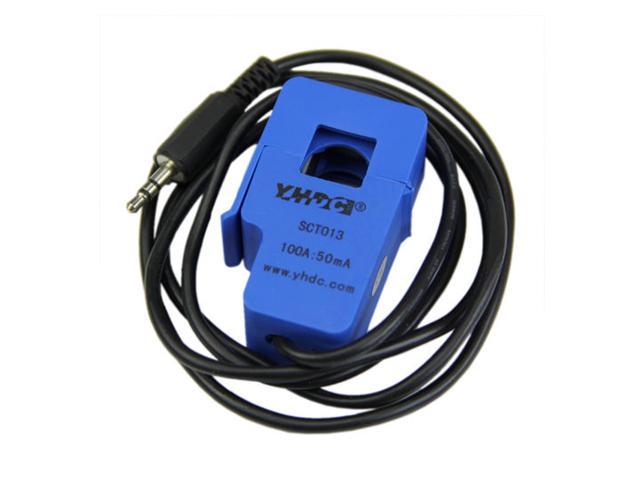Hi guys,
recently I made a current probe with the idea to measure the current coming out of my homebuilt power amplifier on my oscilloscope. I have a dummy load
and can measure the voltage to deduce the current, but for learning purposes I also wanted to build a current probe to sense it directly. The probe is essentially a
split-core current transformer with a single turn primary and a 50 turn secondary, with a 470 Ohm resistor across the secondary. The transformer is clamped around
the cable and a BNC plug goes across the resistor to the scope. The frequency of interest is in the 100kHz range. When I measure the voltage across a purely resistive
50 ohm load and compare to the current measured with the current probe, for some reason i see a large phase-shift (something like 40deg). Does anybody with
more knowledge know why this is and how it can be corrected? I tried putting a capacitor across the secondary to cancel the inductive reactance and thereby set a
"0 degree" point to which I could compare loads that have an inductive or capacitive component, but that only works for a single frequency. I'd appreciate any input. Thanks
recently I made a current probe with the idea to measure the current coming out of my homebuilt power amplifier on my oscilloscope. I have a dummy load
and can measure the voltage to deduce the current, but for learning purposes I also wanted to build a current probe to sense it directly. The probe is essentially a
split-core current transformer with a single turn primary and a 50 turn secondary, with a 470 Ohm resistor across the secondary. The transformer is clamped around
the cable and a BNC plug goes across the resistor to the scope. The frequency of interest is in the 100kHz range. When I measure the voltage across a purely resistive
50 ohm load and compare to the current measured with the current probe, for some reason i see a large phase-shift (something like 40deg). Does anybody with
more knowledge know why this is and how it can be corrected? I tried putting a capacitor across the secondary to cancel the inductive reactance and thereby set a
"0 degree" point to which I could compare loads that have an inductive or capacitive component, but that only works for a single frequency. I'd appreciate any input. Thanks




